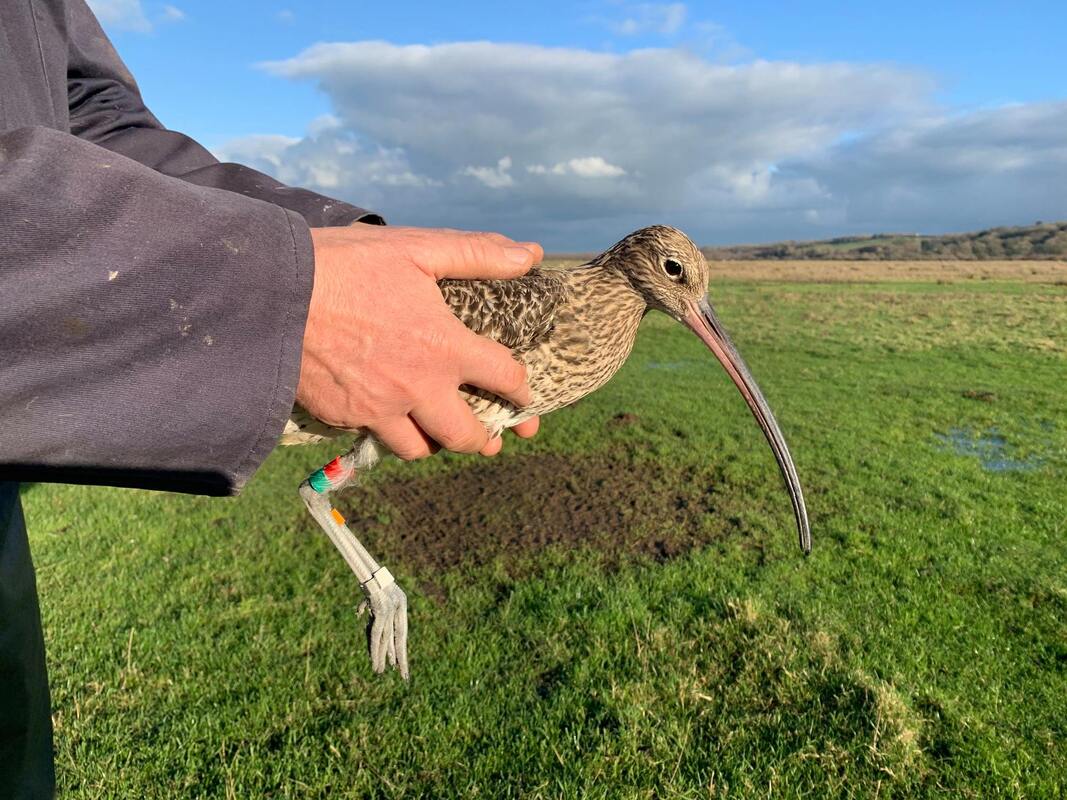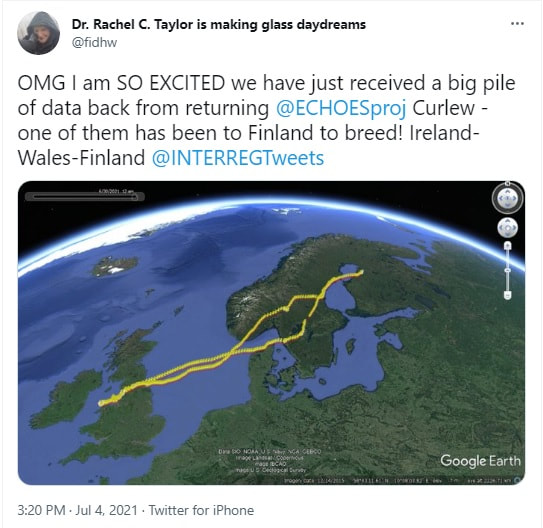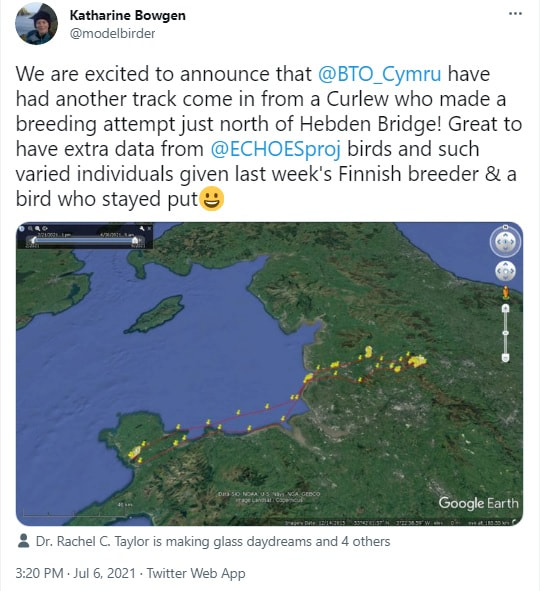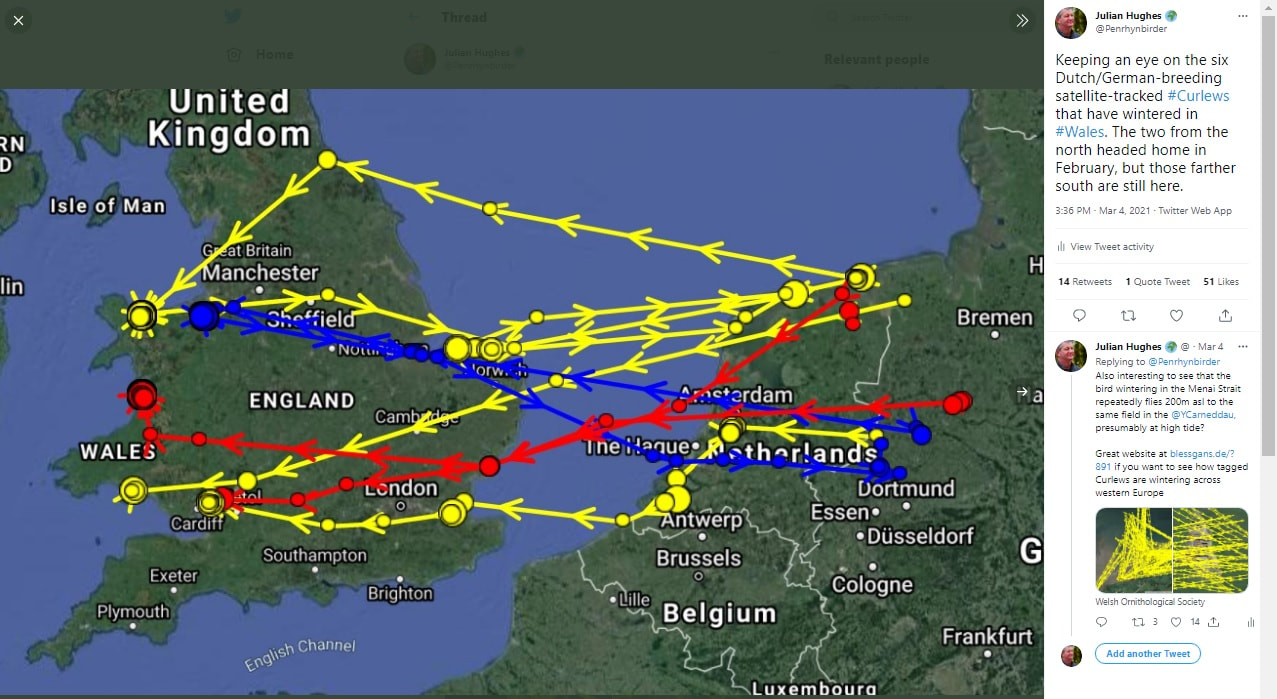|
Satellite tags deployed to study wetland birds on Anglesey show the importance of the North Wales coast as an international flyway. BTO Cymru tagged several Curlews on the Cefni estuary last winter to track their daily movements as part of the ECHOES project. The €2.7 million EU-funded project, involving partners in Wales and the Republic of Ireland, is assessing the effects of climate change on habitats for birds around the Irish Sea. Curlews are declining rapidly as a breeding species across the UK, and estimates for Wales vary between 400 and 1,500 nesting pairs. It’s a more common sight outside the breeding season, when Curlews feed on estuaries, but wintering numbers in Wales have declined by more than 40% in the last 25 years. BTO Cymru scientists have shared maps on Twitter (below) showing that three of these Curlews spent the summer in very different areas. While one stayed on Anglesey, a second made a breeding attempt near Hebden Bridge in the South Pennines and the third, a female, flew to Oulainen in western Finland. The BTO’s Dr Rachel Taylor calculated that after leaving Finland at 6.30pm on 26 June and making a stopover in Sweden, she flew 585 miles non-stop across the North Sea and rested for just a couple of hours before crossing England to Morecambe Bay. The average speed of the sea-crossing was an impressive 38mph. Another tracking project showed that a Curlew that nested in Germany in 2020 spent last winter on the Menai Strait, commuting to fields in the Carneddau foothills above Llanfairfechan. These initial results show the international effort required to save Curlews across Europe. The Elegant Tern has now displayed to Sandwich Terns at Cemlyn NWWT nature reserve for more than two weeks, with birdwatchers there also spotting Roseate Terns and a Marsh Harrier, with a rare Montagu’s Harrier also reported on Sunday. Two Ruddy Shelducks were on the Broadwater at Tywyn on Sunday; the listing authorities are currently reviewing this species’ status in Britain, as there is now an introduced population in central Europe.
Several organisations, including RSPB Cymru and the Welsh Ornithological Society, are backing a petition that calls on the Senedd to prohibit the use of lead ammunition in Wales. Although lead shot has been banned over some wetlands in Wales for almost 20 years, the volume of toxic lead used across the wider countryside where it can poison a wide range of bird species, has led to this call by a community nature group in South Wales. Shooting groups have committed to phasing out lead shot by 2025, but not to a legal ban.
0 Comments
Leave a Reply. |
Bird notesA weekly update of bird sightings and news from North Wales, published in The Daily Post every Thursday. Archives
July 2024
Categories |




 RSS Feed
RSS Feed
